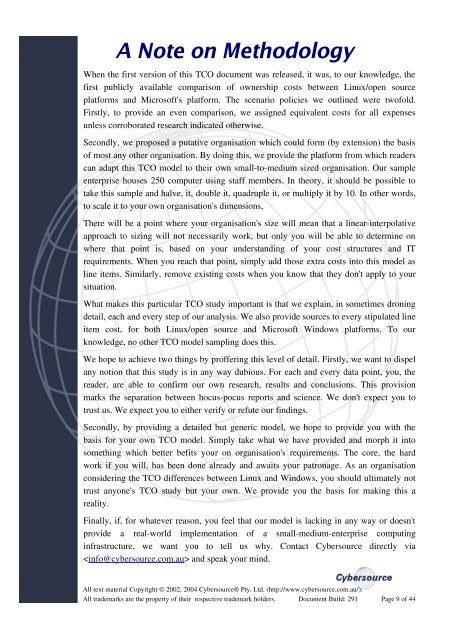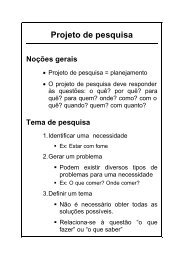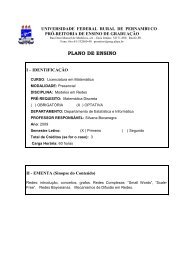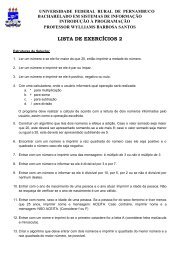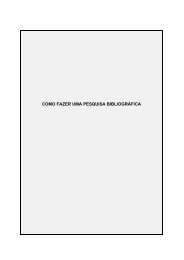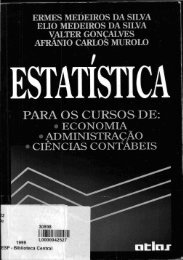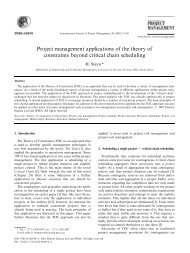Linux vs. Microsoft TCO Comparison
Linux vs. Microsoft TCO Comparison
Linux vs. Microsoft TCO Comparison
Create successful ePaper yourself
Turn your PDF publications into a flip-book with our unique Google optimized e-Paper software.
A Note on MethodologyWhen the first version of this <strong>TCO</strong> document was released, it was, to our knowledge, thefirst publicly available comparison of ownership costs between <strong>Linux</strong>/open sourceplatforms and <strong>Microsoft</strong>'s platform. The scenario policies we outlined were twofold.Firstly, to provide an even comparison, we assigned equivalent costs for all expensesunless corroborated research indicated otherwise.Secondly, we proposed a putative organisation which could form (by extension) the basisof most any other organisation. By doing this, we provide the platform from which readerscan adapt this <strong>TCO</strong> model to their own small-to-medium sized organisation. Our sampleenterprise houses 250 computer using staff members. In theory, it should be possible totake this sample and halve, it, double it, quadruple it, or multiply it by 10. In other words,to scale it to your own organisation's dimensions,There will be a point where your organisation's size will mean that a linear-interpolativeapproach to sizing will not necessarily work, but only you will be able to determine onwhere that point is, based on your understanding of your cost structures and ITrequirements. When you reach that point, simply add those extra costs into this model asline items. Similarly, remove existing costs when you know that they don't apply to yoursituation.What makes this particular <strong>TCO</strong> study important is that we explain, in sometimes droningdetail, each and every step of our analysis. We also provide sources to every stipulated lineitem cost, for both <strong>Linux</strong>/open source and <strong>Microsoft</strong> Windows platforms. To ourknowledge, no other <strong>TCO</strong> model sampling does this.We hope to achieve two things by proffering this level of detail. Firstly, we want to dispelany notion that this study is in any way dubious. For each and every data point, you, thereader, are able to confirm our own research, results and conclusions. This provisionmarks the separation between hocus-pocus reports and science. We don't expect you totrust us. We expect you to either verify or refute our findings.Secondly, by providing a detailed but generic model, we hope to provide you with thebasis for your own <strong>TCO</strong> model. Simply take what we have provided and morph it intosomething which better befits your on organisation's requirements. The core, the hardwork if you will, has been done already and awaits your patronage. As an organisationconsidering the <strong>TCO</strong> differences between <strong>Linux</strong> and Windows, you should ultimately nottrust anyone's <strong>TCO</strong> study but your own. We provide you the basis for making this areality.Finally, if, for whatever reason, you feel that our model is lacking in any way or doesn'tprovide a real-world implementation of a small-medium-enterprise computinginfrastructure, we want you to tell us why. Contact Cybersource directly via and speak your mind.All text material Copyright © 2002, 2004 Cybersource® Pty. Ltd. (http://www.cybersource.com.au/).All trademarks are the property of their respective trademark holders. Document Build: 291 Page 9 of 44


